Book a ClimbPark Session.
Posted On
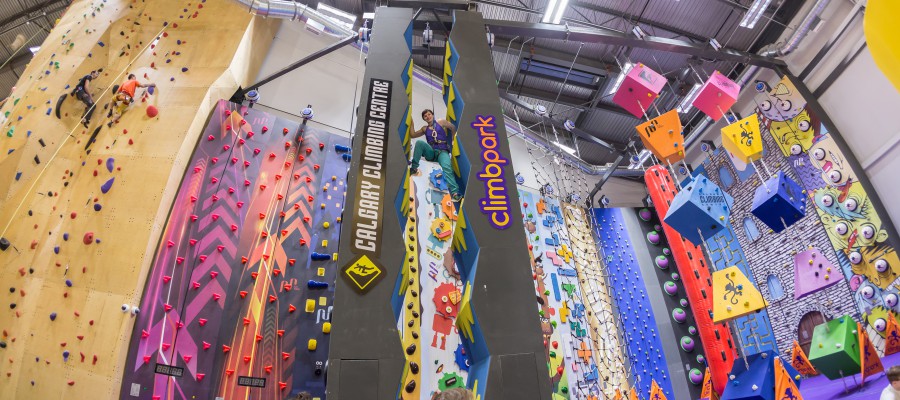
Calgary Climbing Centre ClimbParks
–
Two of our facilities have ClimbParks.
CCC Hanger (in the north) and CCC Rocky Mountain (in the west). Wall elements vary at each location.
Our ClimbParks offer an entirely original climbing experience. It’s a fun zone with vertical challenge elements where participants push their limits on our Jump Tower, Maze wall, Balance Pillars, Freefall Slide, Speed walls, Spider Web, Floating Cubes, Disappearing Holds and more. Staff supervise at all times.
Shopping Sustainably
Posted On
BLUESIGN is a holistic system that provides solutions in sustainable processing and manufacturing to industries and brands. Based on strict criteria, auxiliary material and services are developed to support the company specifically in its sustainable development. As an independent authority, BLUESIGN checks the progress that a company has made in this effort, provides continual further development of solutions and continuously optimizes its criteria. https://www.bluesign.com/en

The CCC approach shop has become a one stop shop for all things climbing related. They inspire to provide a resource for members and guests alike that facilitates their climbing by providing everything they need in one convenient location. Whether you are after gear for your next outdoor adventure or a new pair of climbing pants to put holes in, they have got the gear for you. They choose vendors based not only on the products they carry but also their community standing and their commitment to progressing the sport in the best way, be that focused on innovation, sustainability, and inclusivity. Many of the brands they carry have completed BLUESIGN checks so are held accountable to continually maintaining and improving their sustainable development.

Edelrid is one of the newer brands CCC has brought into the approach shop. As a medium sized company they understand that their environmental impact may not have a large scale effect on global environmental issues. This has not derailed them from taking every possible step towards making significant global and lasting changes. Among their other efforts they have partnered with NEWSEED. ”By partnering with NEWSEED, we now have a further opportunity to put this polyamide waste to new use. Every year, twelve tons of polyamide waste are therefore given a new and useful purpose.” https://www.edelrid.de/en/company/sustainability.php Along with Edelrid many other brands you can find in the CCC approach shop are not only BLUESIGN but are also continually finding new ways to create sustainable products and better their environmental and global impacts. Arc’teryx has partnered with a few key neighboring manufacturing and design partners to help create a reusable medical gown in response to the shortages brought along with Covid-19. https://blog.arcteryx.com/medical-gowns/ https://arcteryx.com/ca/en/explore/sustainability/ Prana uses recycled wool to help lessen the impact on sheep in efforts to respect the planet and its animals. Bluesign | Eco-Friendly Clothing | prAna The North Face runs an Explore Fund grant to help exceptional nonprofit organizations encourage participants to experience outdoor activities and develop an enduring appreciation of the outdoors. Social Responsibility (thenorthface.com)

The Calgary Climbing Center prides itself on providing its patrons with the best possible products and brands. They strive to continually seek improvement in themselves and their vendors; screening each new brand they want to bring into the approach shop to make sure that they meet best practices and standards for the outdoor industry.
Climbing Lingo For Gumbies
Posted On
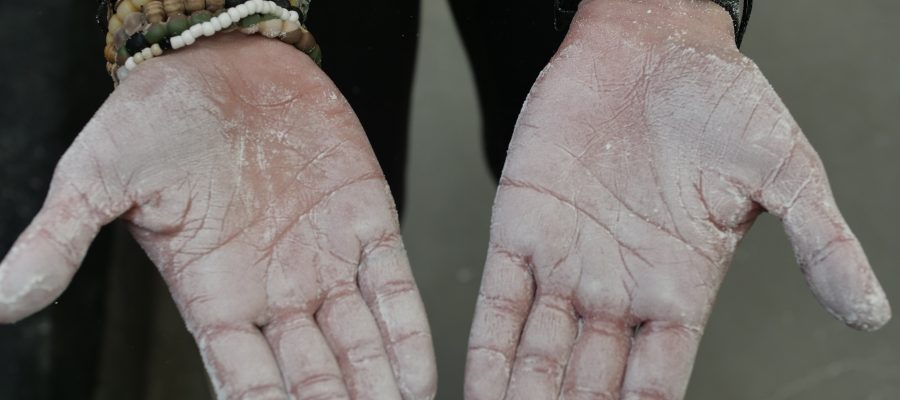
Walking into the gym for the first time and meeting the over zealous desk staff, as they set you up with your gear it dawns on you that you might not know what you’re in for. It seems simple enough, just go up right? While you’re putting on your shoes that are probably two sizes too small, you can’t help but overhear a group of climbers talking. “Just dino to the jug, then you can get a high heel hook and deadpoint to the finish.” With terms that describe sub-genres of the sport, body movements and what seems like a million different ways to hold onto a rock, it is easy to be intimidated by seemingly impenetrable climbing jargon. My first time in a climbing gym, a kind climber came up and offered me beta on a climb. I smiled and nodded along as if I knew what beta was. To make your first visits to the gym a little easier here’s a few terms that can help you avoid the ever so awkward smile and nod.
Let’s start with some basic knowledge to get through the door:
- Bouldering vs Routes: Bouldering is shorter walls with big comfy mats underneath to help protect your falls. Routes are tall walls which require you to be tied in and have a belayer
- Lead vs. Toprope: When climbing routes there are two types of climbing allowed in most gyms. Top rope is when the rope is already at the top of the wall through an anchor, this mitigates risks of falling and allows you to take a break at any point on the wall. Lead climbing is often learned so you can transition to outdoor routes. When lead climbing the rope is on the ground and you clip it into draws as you climb up. This means that falls can be much larger.
- Belay/Belayer: Belayi
ng is for route climbers. It is the person on the ground that helps manage slack for their climber. - Chalk: Whether liquid or powdered most gyms will offer you chalk when you go in. They do not want you making art on their walls. Putting chalk on sweaty hands can help maintain better friction on the wall. It isn’t a necessity but it sure is helpful
- Crux: This is the hardest move or sequence of moves on a climb
- Send: When you complete a climb from start to finish. “JUST SEND IT!”
- Beta: information about the climb or type on how to send it
Climbing holds:
- Jugs: Big open holds that you can fit your hand in. They are easy to grip and make for an excellent rest!
- Slopers: Are round holds with little to no positive edge for hand placement. Keep your body weight opposed to the direction of pull and aim for a low center of gravity. Friction is key with these holds
- Pinches: These are exactly what they sound like. Being able to wrap your thumb around the hold will offer lots of extra friction
- Foot chips: No these are not some nasty snacks. Foot chips are small flat holds that are intended to be used as foot placements. Try to intentionally place your foot on the hold while pressing your heel down toward the ground.
- Crimps: Small ledge-like holds that you can only place the pads of your fingers on. Make sure to keep your body weight close to the wall to maintain better grip.
Climbing movements:
- Campus: To forgo the evolutionary miracle of feet and climb using only your arms
- Gaston: Named after a french alpinist, this move requires your arms/palms to push in an outward motion rather than pulling towards your body. To grab a hold as a gaston you rotate your palm away with your thumb pointing down. You can generate friction against the hold by pressing outward toward the elbow.
- Smear: Smearing is done when there is no good foot placement so you push your foot into the wall and hope for the best
- Flag: Placing your foot somewhere on the wall to help with balance
- Heel Hook: Uses the heel of your foot to hook onto a hold
- Toe Hook: Same as a heel hook but with your toes
- Bat Hang: Hanging by only your feet, much like well…a bat
- Mantle: Moving your hands into a press to get over or onto a hold, much like getting out of a pool
- Elvis leg: When you calves start to feel the groove and involuntarily start bouncing.
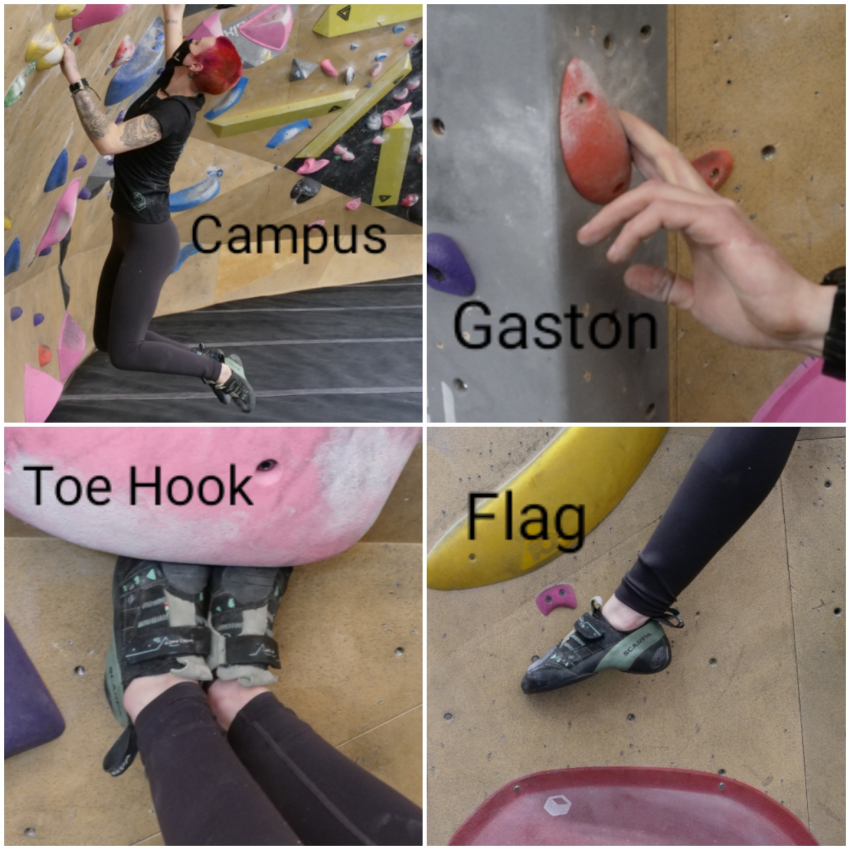
While this is a limited list and there are many more words and phrases to learn, it is a good starting point to get you in the door and sounding like a pro. Climbing can be scary even without the language barrier, by adding these terms to your vocabulary it will help you to better communicate with your fellow climbers.
Ice Climbing in a Junkyard
Posted On
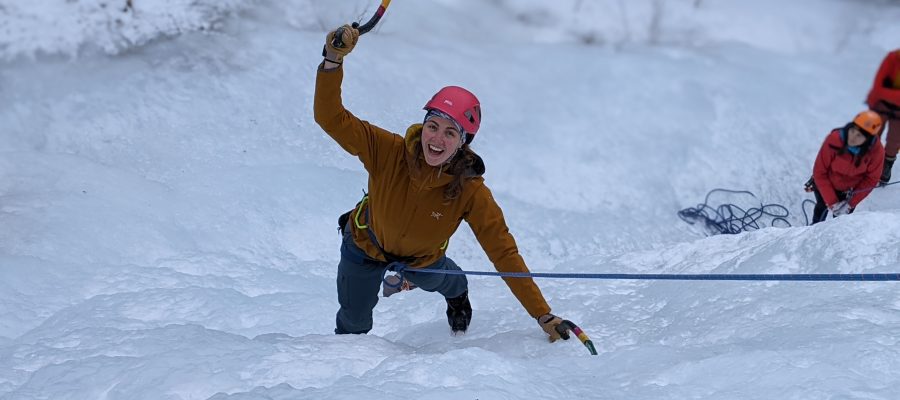
I never understood the draw to ice climbing. Yes it looks invigorating in photos but think about it. Who in their right mind chooses to go out in the freezing cold to hang out on a big slab of ice, and in places with names like Junkyard? Nonetheless you have to try everything once right? My first experience of ice climbing was brutal, we spent hours in -30 °C for a few minutes of climbing. I left that day with a great deal of respect for the sport but also having decided that winter sports were just not for me. Lo and behold a year later I was roped in to try again. I don’t know if it was due to the preferable weather, the sublime person that dragged me out or if I had just gone crazy enough over the last year, but after one climb I was hooked.

A mere 10 minutes out of Canmore and a 15 minute approach to the climbs, the Junkyard was the perfect place to start out. With climbs averaging in the WI2 to WI3 range it is optimal for beginners or anyone brushing up on their skills. On top of that you get to climb with a quintessential view of Ha Ling peak! As I am just a beginner I have little sense for how the grading system works and feels. Most climbs I have done have been in the WI3 range and feel like big 5.9 jug halls. The technique and strength required are far different and difficult to compare. Here are a couple links to some great resources on ice grades.
https://ascentionism.com/ice-climbing-grades-a-complete-
https://www.neice.com/ice-and-mixed-climbing-grades/

Bouldering at Buddha
Posted On
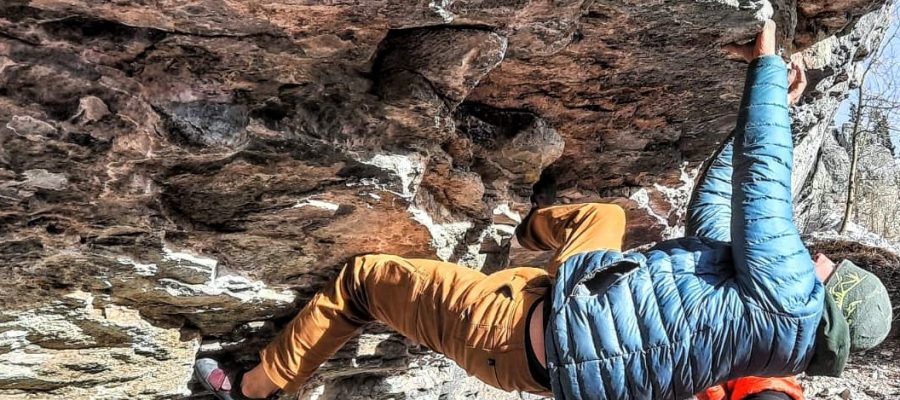
Bouldering at Buddha
Bouldering in the winter can seem daunting and unconventional. We often use these cold seasons to embrace alternative forms of climbing. Digging out crampons and axes from the depths of gear piles we layer up and head out towards bold new objectives. For climbers who haven’t procured the necessary knowledge or who merely lack the desire to experience screaming barfies for the first time, we retreat towards the comfort of gyms. Fortunately Calgary’s chinooks bring hope to those who have been hiding in gyms reminiscing on the memories of warm days and dry rocks.
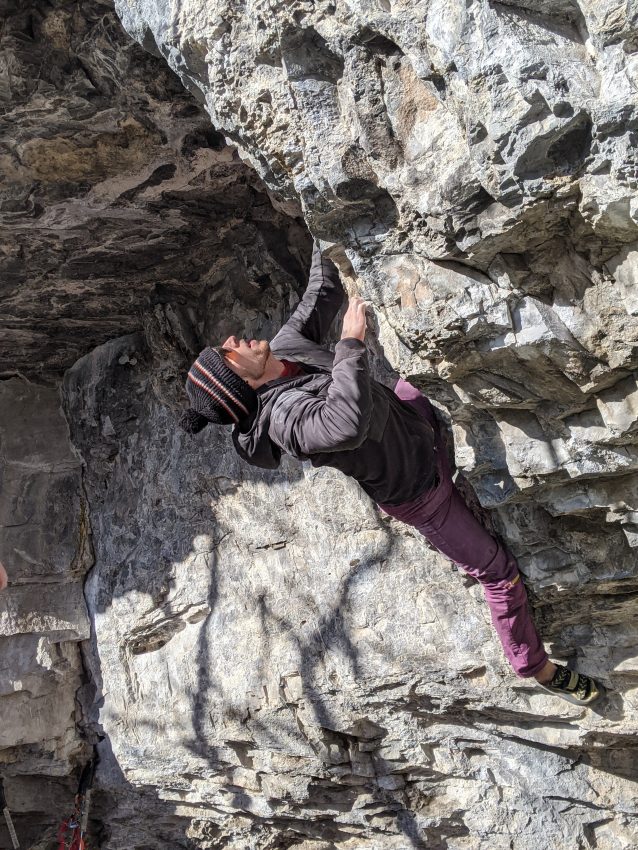
Cody Wreggitt on Malcomhoffer Arete V5
In 1996 while mountain biking on the Powderface trail, Daren Tremaine dismounted to unlatch an old gate. As he took in the view he caught sight of the cliff bands on the south facing slope. Upon further exploration he and Ryan Johnstone found the cliff band we now call White Buddha. Along with Rich Castillo, this trio were the first to establish problems here. While most of the mountains lay frozen White Buddha stood out. Named after the rock scar on the opposing valley, this west facing ridge acts as a suntrap permitting climbers to enjoy the rock virtually year round.(Dave Rone, Tom Gnyra n.d.) Realizing that rock climbing was available in the Rockies throughout the winter seasons was the end to ice climbing for Ryan. (Ryan Johnstone, 2021)
This limestone face features everything from pocket filled slab to overhang and roof features. It is the premier of winter bouldering (team CANrockies n.d.). The crag also offers some short rope lines, providing options for your preferred climbing style. The unique roofs help the rock remain dry, even succeeding snowfall and light rain. White buddha offers diverse and challenging boulder problems ranging from V2 to V10. The wide range in grades make it a welcoming destination for climbers of all abilities. Many of the boulders along the cliff band have been mined out and rolled down the hill to help create a flatter fall zone. Left Potato Bonda and The Hasselhoff Arete were two of the first difficult lines that Ryan put up. Establishing routes and getting first assents was competitive, but in the most amiable way. It was a perpetual race to see who could get the climb first and how fast others could repeat it. Despite this Ryan says they can barely remember who climbed what first. Everything from cleaning a route to coming up with new beta was a team effort. The trio were all very close in ability often repeating routes the first day they were ascended. However Hammer Delux and Hammer Royale are two of Ryan’s proudest accents at Buddha. Taking five Sundays in a row they required a lot of effort to complete. While Daren, Rich and Ryan were the first to put up most of the easier lines, Kevin Wilson came along later and did most of the really hard lines. Jon Jones put up the first sport climbs and Glenn Reisenhoffer added more sport climbs later. (Ryan Johnstone, 2021)
Approaching this crag can be an adventure on its own. The short hike offers icy switchbacks in the morning and a mudslide-like path once the sun hits the hill. Despite winter conditions this path has come a long way from when it was established and can now be seen by google earth. Wearing spikes or having hiking poles are beneficial on the descent if you aren’t sure footed. To add excitement to the approach many climbers bring toboggans or crazy carpets to haul their pads until they hit the switchbacks. While I wouldn’t advise trying to sled down the mountain side, the small rolling hills on the wide path make for a fun ride. As you approach the sun kissed cliff band take a moment to turn around and take in the view of elbow falls from just across the highway. (Matt Ford n.d.) The temperate weather and gorgeous views are only a fraction of what makes this crag exceptional.
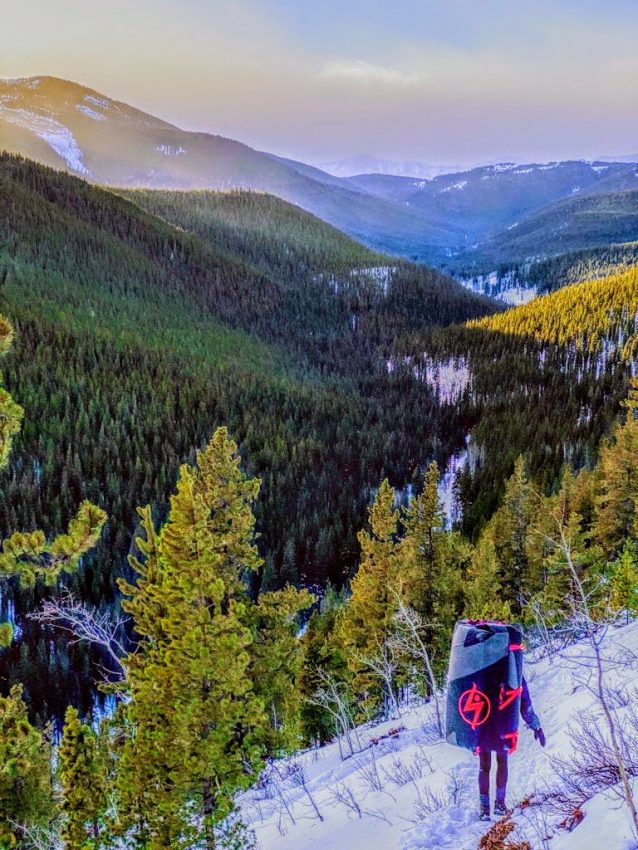
Brooke Norton on the descent
References: Ryan Johnstone, January 2021 interview, Team CANrockies n.d. “White Buddha” https://27crags.com/crags/white-buddha, Dave Rone, Tom Gnyra n.d “Mountain Project”https://www.mountainproject.com/area/114250731/white-buddha, Matt Ford n.d. “Rock Climb at White Buddha” https://www.theoutbound.com/canada/rock-climbing/rock-climb-at-white-buddha
Onward and Upward
Posted On
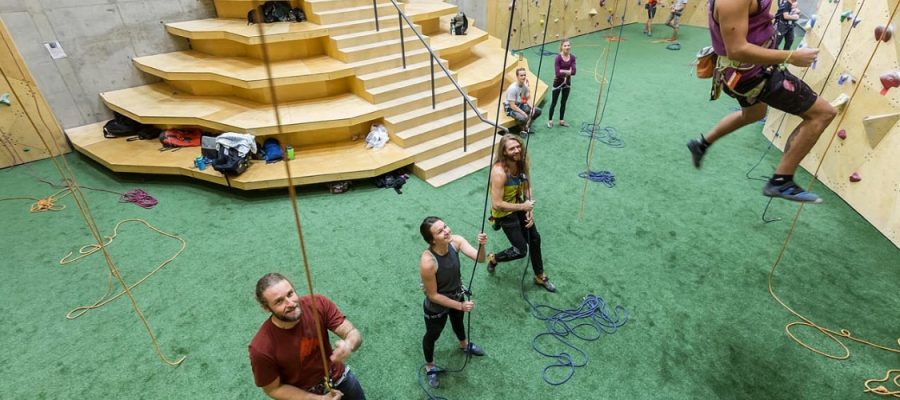
This week the CWA posted an article “Onward and Upward”. They discuss the obstacles that gyms have faced over the last year, how we have overcome and continue to push forwards as a community. It features our very own Walson Tai along with three other gym owners across Canada and the United States. They discuss the protocols put into place and the ways they have had to adapt to keep their communities inspired despite the current circumstances.
https://www.cwapro.org/blog/onward-and-upward-gym-owners-look-into-2021
A Climbers Best Friend
Posted On
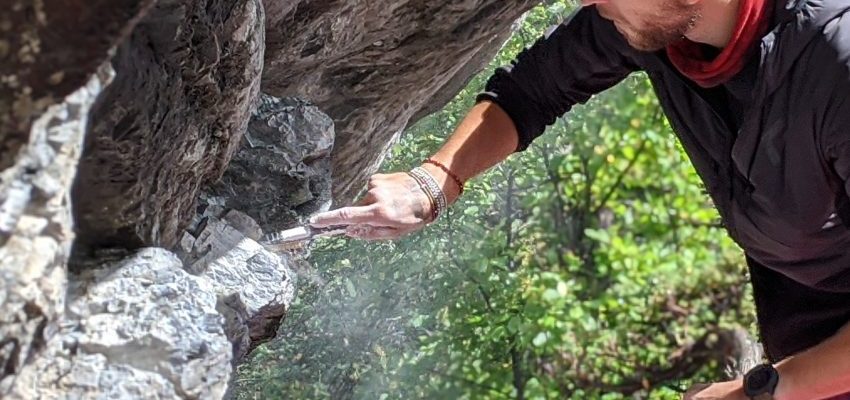
A Climbers Best Friend
Like many people, the first thing I do before hopping on the wall is chalk up. Whether it’s due to hot temperatures and sweaty hands or that chalking up has become a ritualistic behavior, it is something that brings comfort and confidence to my climbing. With gyms adapting and putting new measures into place to mitigate the risk of covid, chalking up may do more than adding extra friction. I am not a scientist nor an epidemiologist, but in my research I have found some articles that help shed light on the relationship between covid and chalk.
In July Friction Labs partnered with scientists at the University of Colorado Anschutz Medical Campus to test out how well liquid chalk could kill bacteria and viruses. While lab work often gets passed off to graduate students, this project caught the attention of a team of professors specializing in immunology and microbiology. Test results showed that not only did the chalk completely kill the virus but it was as effective as the industrial-strength disinfectant CU uses to disinfect their own laboratories. Fortunately for us, while it is as effective as their disinfectant it isn’t as harsh on our hands! For more information on the study check out the link below!
Liquid Chalk Proven in CU Labs to Kill Coronavirus, Potentially Helping Climbing Gyms to SafelyReopen

Around the same time Friction Labs was testing their liquid chalk the Association of British Climbing walls tackled the question of powdered chalk. With many climbers still preferring to use powdered chalk it is important to know how it may affect the spread of viruses such as covid. Researchers at the De Montfort University Leicester in England conducted studies to see how they interacted. In this study they showed that while powdered chalk did not completely kill the virus, the number of infectious particles were reduced by more than 99%. This means that chalk left on holds will not retain the virus, even if someone inadvertently carries the virus into the gym. Not only does chalk reduce the number of particles, it also makes the virus inactive. Rich Emerson, Chair of the ABC said: “These results look fantastic and show chalk could once again be the climbers best friend.”
https://www.abcwalls.co.uk/wp-content/uploads/Corona-Virus-and-Chalk-Press-release-v2.p
While the results of both studies bring a sense of optimism to gyms reopening, it is important to also remember and maintain all other protocols gyms have put in place. Everything from wearing a mask to physical distancing still remain important. We can go back knowing that there are ways that we as individuals can protect our gyms. Let’s chalk up and get climbing!
Cacthing Up with Grzegorz Florek and Zak McGurk
Posted On
Over the holidays we had a chance to talk to Zak and Grzegorz about the challenges of sending outdoor climbing projects during the pandemic, as well as show us the new Boreal line of shoes.
Rocky Mountain Culture – Learning How To Rock Climb
Posted On
Follow 2 new climbers over the course of 3 weeks as they work towards their goal of lead climbing outside.
They took a belay course, a lead course, and were able to put their new skills to the test with our partners at Cloud 9 Guides in Banff National Park.
First CCC Sport Cup was awesome!
Posted On
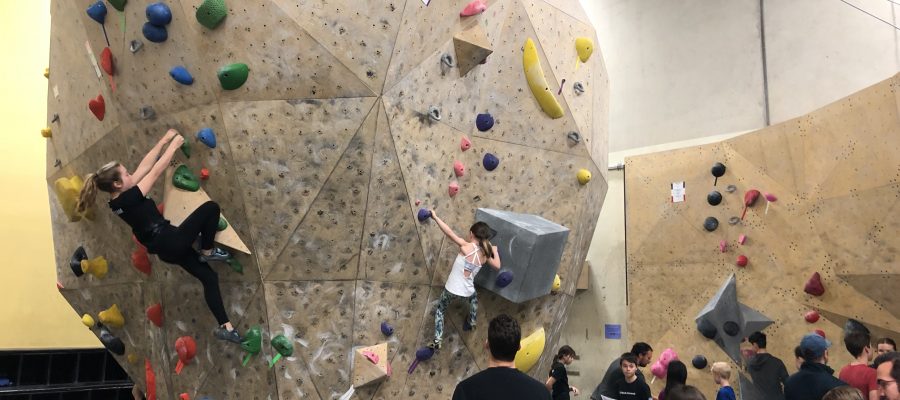
With the ACA sanctioned competitions getting more structured and rigid, the CCC has started a new series of events for our youth team climbers.
